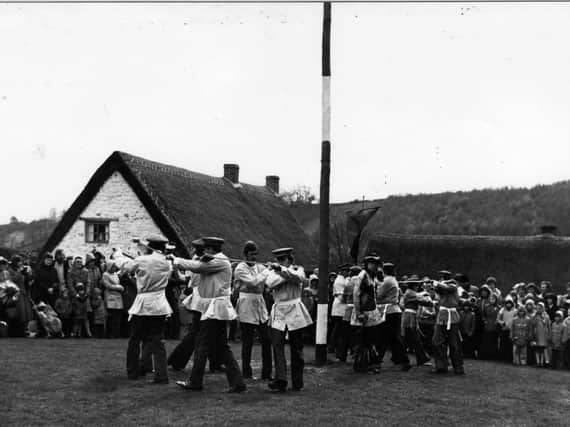The food and rituals of the festive season from Yorkshire's past


We are now in the midst of the festive season. But anyone weary of cooking Christmas dinner would do well to spare a thought for our medieval ancestors. They had 12 days of celebrations to contend with.
At Ryedale Folk Museum, we tell the stories of the people of the North York Moors and a brief foray into the unique customs and traditions here reveals that this was a time for letting off steam, for revelry on a grand scale.
Advertisement
Hide AdAdvertisement
Hide AdThere were different dishes attached to different days. Boxing Day, for example, celebrated as the Feast of Saint Stephen, was the day for eating goose pies – and for sharing them with less prosperous neighbours.
The symbolic value of festive eating is hard for us to appreciate fully. Today, we may get into the Christmas spirit much earlier. However, at one time, Advent marked a period of semi-fasting and the Twelve Days of Christmas were an opportunity to indulge after three or four weeks of a “restricted diet” – little wonder people needed 12 days to recover.
The fast was often broken in Yorkshire by “frumenty” – or “frumity”, as it was known around the North York Moors. This popular medieval dish, not dissimilar to porridge, was made from boiling cracked or creed wheat in milk and spices.
Even in wealthier households, it would have been served as part of a banquet, often between courses. For the poor, the spices would have brought a welcome relief after weeks of very bland fare.
Advertisement
Hide AdAdvertisement
Hide AdWe get an insight into the symbolic potency of frumity through a curious custom in Kirkbymoorside. Here, in an intriguing ritual, it was eaten in silence at the sounding of a “frumity bell”. Only after the dish was finished would a family leave the table and resume conversation.
The spices also found their way into a range of other dishes during the festive period. In his A History of Whitby, published in 1817, the Rev George Young recorded that the town was by then producing 12 tons of gingerbread annually. Other sources suggest that around five tons were made specifically for Christmas.
Other towns in the region had their own recipes, of course. In Kirkbymoorside, gingerbread was sometimes known as Pepper Cake, probably because of the addition of coriander, and the recipe also included caraway seeds, ground cinnamon seeds and allspice.
As the season continued, on the morning of the Eighth Day – New Year’s Day – many households would have attached significance to the “first footing”, the arrival of the first visitor of the year.
Advertisement
Hide AdAdvertisement
Hide AdAround the North York Moors, the arrival of a dark-haired man was considered lucky. In nearby Staithes, this person was expected to bring a silver coin, put a coal in the hearth, and ceremonially incant the line: “May your hearth never grow cold.”
There were many ways to procure good luck. Alms gathering had occurred since the Middle Ages, seen on the moors, for example, in the “vessel cup” or “vessel box”’ which continued for centuries. Taken door to door during the festive season, this is likely a variation on the more common “wassail” bowl, dressed with ribbons and mistletoe.
By Twelfth Night the revelry reached a climax, or, in this region, the first Monday after that date, known as Plough Monday. This is unsurprising given that the next day would see a return to hard toil, with the tough ploughing due to last until March.
Sword dancing is another festive ritual with links to Yorkshire. As part of the pageant, the dancers wore elaborate outfits or embellished clothes with ribbons.
Advertisement
Hide AdAdvertisement
Hide AdThe Goathland Plough Stots are a rare surviving troupe that was revived after a 40-year break by a local schoolmaster in 1922. Their dances, marked by spectacular sword clashing, begin with ceremonial words, either sung or shouted, and end with the raising together of locked swords.
Support The Yorkshire Post and become a subscriber today. Your subscription will help us to continue to bring quality news to the people of Yorkshire. In return, you'll see fewer ads on site, get free access to our app and receive exclusive members-only offers. Click here to subscribe.